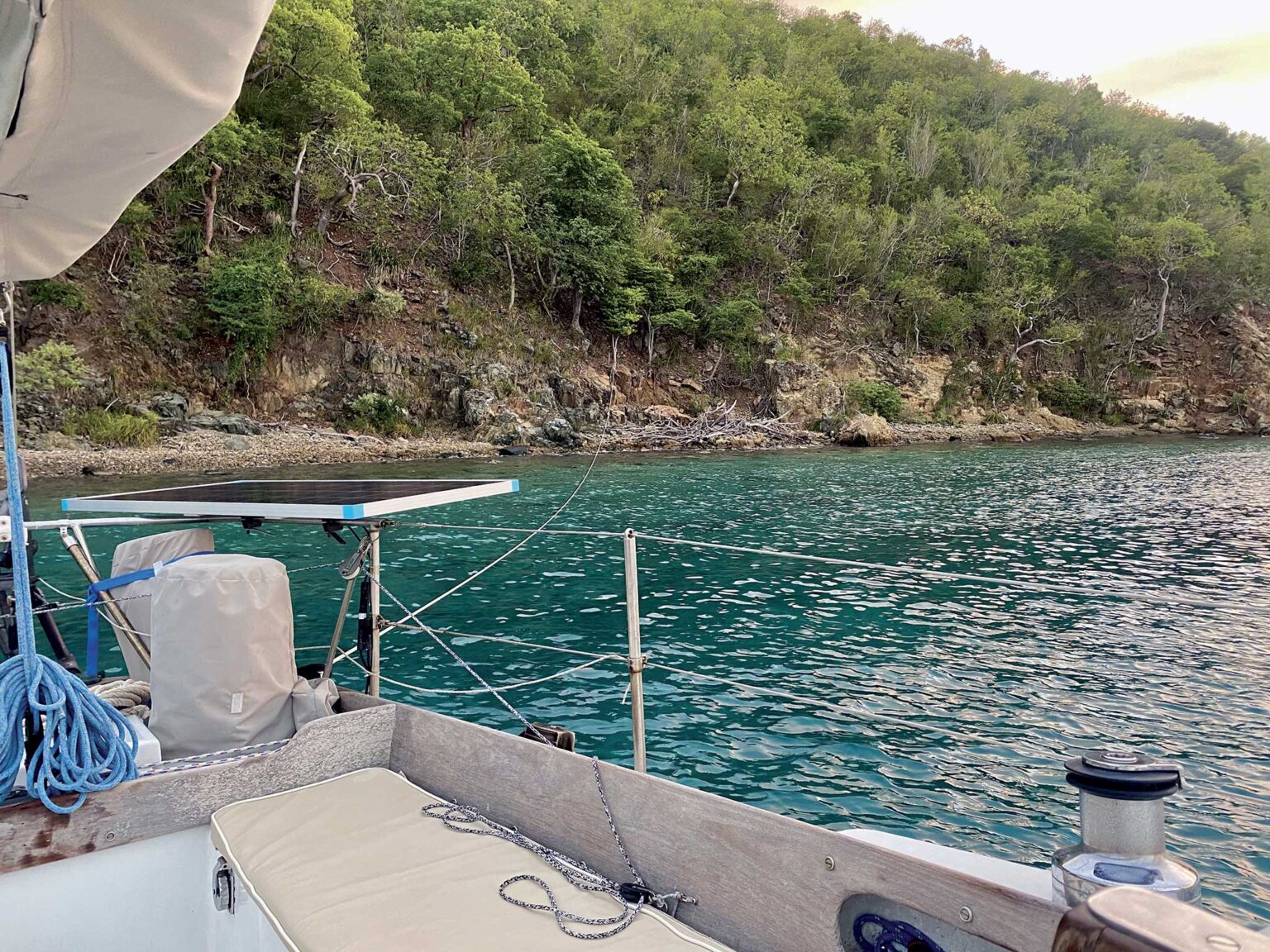Finding the perfect spot to anchor a boat can often feel like searching for a needle in a haystack. However, being equipped with a few anchoring techniques can turn this task into an adventure rather than a chore.
The Quest for the Ideal Anchorage
After departing from a bustling harbor, a lone sailor sought a tranquil retreat for the night. With the sun dipping low on the horizon, it was crucial to find a well-protected and peaceful anchorage. This sailor made their way to a renowned haven, only to discover that even experienced sailors face challenges when it comes to anchoring.
Approaching a favored destination, the sailor noticed only a couple of boats ensconced nearby, providing the perfect opportunity to drop anchor in the tranquil waters. As the wind played subtle tricks, creating puffs and lulls, the sailor deftly engaged the autopilot and began preparing the vessel for anchoring.
Initial Setup for Anchoring
With the sails furled and the anchor windlass ready to go, a moment of anticipation filled the air. The anchor plunged into the depths, but not without its issues. Despite being in a seemingly sheltered cove, the surrounding hills created a swirling wind effect, causing the boat to move about unpredictably, leaving the sailor concerned about potential collisions with other boats.
Implementing Solutions
Quick on their feet, the sailor rowed a line ashore and secured it to a sturdy tree. This innovative approach transformed the erratic movement of the boat into a gentle sway, ultimately allowing for a peaceful night under the stars.
Creativity in anchoring often stems from the unexpected challenges presented by each new location, and the sailor’s experience underscores this very fact. Variables like wind direction, current, and tidal changes add layers of complexity to each anchoring endeavor.
Reliable Tools for Success
To be truly effective at anchoring, having access to reliable equipment is paramount. Many sailors swear by specific anchor designs that have proven to be versatile and trustworthy over time. Choosing the right anchor can be akin to selecting the best sailing route – it can adapt to varying conditions. Whether employing a primary anchor or a secondary line, ensuring that your tools are up to the task will keep complications at bay.
Strategies for Specific Situations
Managing Wind and Current Discrepancies
When wind and current conflict, the situation can become chaotic. Many seasoned sailors watch other anchored vessels to see how they react to the currents. However, observing different hull shapes and types can give misleading signals since their positions can change dramatically based on their designs.
To effectively navigate these waters, providing ample space for surrounding vessels is essential. As currents shift, keeping distance from other boats not only protects your own but helps maintain the integrity of the anchorage.
Techniques for Calm Waters
Under calmer conditions, it’s beneficial to drift with the wind and current before making your approach. This practice allows you to gauge how the winds will affect your intended anchor location, enhancing your ability to drop the anchor successfully.
One innovative method involves rigging a line to the anchor for improved positioning. This technique can help alleviate the rocking motion that typically arises from waves, ensuring a smooth rest. For those navigating into busy or narrow passages, such as inshore lagoons or busy harbors, employing two anchors can limit swinging and enhance stability.
Creative Anchoring: Keeping it Simple
Anchoring doesn’t have to be complex. Sometimes the simplest approaches yield the best results. Especially in tight spots, using a second anchor to secure the rear of the boat can offer peace of mind. In areas where transitioning to another anchorage might be risky, having a backup plan or using shoreline features to secure the boat can provide an extra layer of safety against strong tidal changes.
Rafting Techniques
In busy harbors, a savvy sailor might find that allowing another boat to anchor nearby offers an easier solution. Successful rafting is dependent on calm conditions, ensuring that both vessels have adequate spacing and fendering to avoid damages. A critical point to remember is to communicate effectively with the other vessel to ensure a safe and enjoyable experience.
Summary and Insights
Through every anchoring experience, sailors learn more about creative ways to explore new environments and adapt to unique challenges. Anchoring is a skill that evolves; it encourages exploration and innovation while navigating beautiful, serene waters. As you venture into new destinations, pay heed to the landscape and the local conditions. Each bay and inlet presents someone with stories that are woven through local culture and history.
Considering embarking on a seaside adventure? Renting a boat can not only enhance your experience but also provide the freedom to explore untamed and peaceful waters at your own pace. Every bay, lagoon, and cove is unique, just like the local scenery, letting you delve into the rhythms of natural beauty and vibrant cultures. Don’t miss out on your opportunity to discover these gems; consider exploring GetBoat.com for unforgettable sailing adventures.
In closing, mastering creative anchoring techniques opens a world of adventures in yachting, summoning you to discover new locations while ensuring a safe anchorage. Plan your next ocean escapade by ensuring you have tailored boat rentals at your fingertips, guiding you effortlessly to hidden treasures along the way.

 Mastering Creative Anchoring Techniques">
Mastering Creative Anchoring Techniques">
